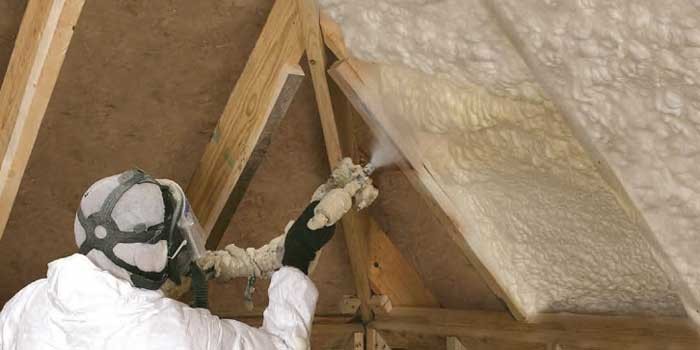Nobody enjoys dealing with mold in their residence. However, the smell of mildew is frequently the first sign of a mildew problem, and it is a strong indicator that a larger mold problem will soon follow. Your best course of action is to determine how to eliminate both the mildew smell and the mildew itself, so that you don’t end up with a larger issue than you anticipated.
Here is what to do if you’ve detected a mildew odor in your home, as well as a guide to what mildew is, why it occurs, and how to prevent it.
What is fungus?
Mildew is a type of mold that grows in a thin, flat pattern, typically in moist environments such as bathrooms, kitchens, and crawlspaces. It requires a specific balance of moisture and temperature to thrive, which explains why it is commonly found in warm, damp, and dark places.
Does this sound familiar? There is a great deal of overlap between mildew and other types of mold that can be found in the home, particularly in terms of the environments in which they thrive. However, there are key differences between the two that can help you distinguish between them.
Mold vs. mildew:
Mildew and mold can only grow in warm and moist environments. Here are some ways to determine what you’re up against:
Consider the surface. Mildew is flat and frequently powdery, and it lives only on the surface of its habitat. Mold, on the other hand, is typically slimy or fuzzy and grows beneath the surface as well as on the surface.
Consider the hue. Mildew is typically yellow, gray, or white in color. Mold is typically dark green or black.
Learn more about the differences between mildew and mold and how to distinguish between the two on this page.
Is mildew dangerous?
Understanding how to eliminate mildew smell is about more than your comfort. Although mildew is not as toxic as mold, it can cause a variety of respiratory symptoms, including sneezing and coughing, as well as headaches, dizziness, nausea, and fatigue, if left untreated. Flyttevask bergen
Mildew can also be hazardous to your home. Mildew, like most fungi, gradually erodes the surface it inhabits. Depending on where it is growing, a serious infestation can cause structural damage to walls, ceilings, stairways, furniture, etc.
What does mildew smell like?
Specifically: musty. Mildew has an odor that matches its environment, which is damp and earthy, and may resemble rotting wood. The main difference is that mildew odors are weaker than mold odors. If the odor is overwhelming, you likely have a mold problem rather than a mildew problem.
How to eliminate mildew odor
The good news is that mildew is easier to treat than mold, especially in comparison. This is largely due to the fact that mildew is a surface problem and not a sub-surface one, meaning that a little bit of scrubbing is generally sufficient to eliminate mildew smell, whereas mold removal requires more extensive solutions.
What is required:
squirt bottle
white distilled vinegar
Small brush or abrasive sponge for scrubbing
Baking soda
Small pail of warm water
Clean cloth
When dealing with mildew, it is also wise to wear protective gear, particularly a mask. Additionally, wear thick flock-lined or rubber gloves to protect your hands from the mildew and the hot water you will be using.
How to eliminate mildew odor:
Remove every item from the affected location.
As long as the conditions are favorable, mildew can spread easily from surface to surface. Since mildew spreads easily on fabrics, it is prudent to remove and inspect all items in the vicinity of where the mildew was first discovered, including furniture and drapes.
Once all items have been removed, conduct a thorough inspection of the area to determine where the mold is. Be sure to inspect grout, tile, within and beneath cabinets, as well as any other areas where the mold may have spread before you discovered it.
Additionally, prepare yourself and the room by donning protective gear and opening all windows to allow fresh air to circulate. You may also install one or two box fans.
Utilize a vinegar spray
Fill your spray bottle with white distilled vinegar and liberally spray the affected area. Allow three to four hours to pass.
Get to scrubbing
Fill your bucket with hot water and pour baking soda into a separate container. Consider this when selecting a container for the baking soda so that you can dip your entire sponge or scrub brush into it.
Soak your abrasive sponge or scrub brush in the hot water before dipping it in the baking soda. Scrub the mold off the surface using a circular motion, reapplying water and baking soda if your sponge or brush becomes dry.
It may require some elbow grease, so ensure that you scrub with sufficient force and remove all of the mildew.
Dry the region
Mildew loves moisture, so be careful not to leave a damp surface behind when you’re finished cleaning, or you may be left with a lingering mildew odor.
To completely dry the area, blot up excess moisture with a clean rag and then leave windows open and/or fans running to expedite the drying process.
Eliminating a mildew odor with bleach:
You may also choose to create a bleach solution, but vinegar, baking soda, and hot water should be sufficient for the task.
To accomplish this, combine one cup of powdered bleach with one cup of warm water in a bucket to create a scrubbing solution. Note, however, that a mask and ventilation are doubly important when working with bleach, despite the fact that it is only mixed with water. Flyttevask bergen




